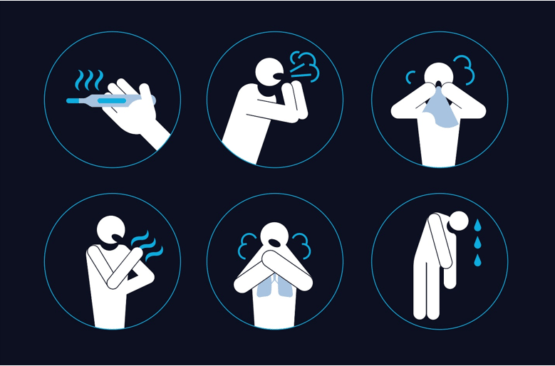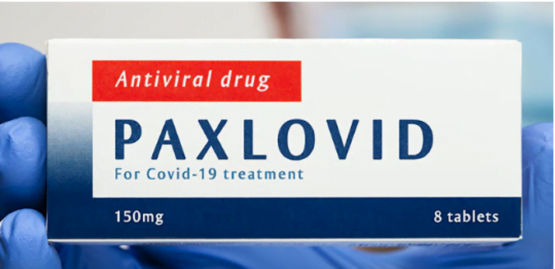The COVID-19 pandemic has gripped the global healthcare setup with a continuously increasing number of patients with infections so severe to need immediate hospitalization. The rising mortality rate in different parts of the world owing to COVID-19 has been another notorious highlight for the health systems to take responsibility for.
In such conditions, the use of existing anti-viral drugs has been on the rise only to be realized their insufficiency to deal with the rapidly worsening situation. Therefore, the development of new potential chemical entities has become the need of the hour.
Recently, a new investigational treatment has been launched in the market by Pfizer Inc. to control the infection in the early stages as well as to contain it from spreading deeper into the body. The so-called ‘Miracle Drug’ of this century is Paxlovid, an orally administered anti-viral drug with nirmatrelvir/bexovid/PF-07321332 and ritonavir as active pharmaceutical ingredients.
This FDA-approved medication Paxlovid, if taken within the first 5 days of the diagnosis, not only ensures early recovery from COVID-19 infection but also reduces the chances of hospitalization by 89%. Moreover, COVID-19 associated mortality rate has also declined with the use of Paxlovid.
The drug is suitable for use in children aged 12 years or above with a weight not less than 88 pounds or 40 kgs. The daily dose of nirmatrelvir is 300 mg given in two divided doses of 150 mg while the recommended daily dose of ritonavir is 100 mg once a day.

Paxlovid anti-viral tablets
When to use Paxlovid?
The ideal way to prevent oneself from the ever-changing COVID virus is to get vaccinated. In addition, booster shots are available in many countries which uplift the immune system in such a way that its ability to fight pathogenic microbes increases. But, in case of a positive COVID infection even after taking vaccination, the oral use of Paxlovid can be recommended by your health care provider on one condition: the infection should be in its first 5 days. The best way to handle the condition is to get tested as early as possible if the COVID symptoms start to appear. Home-based rapid antigen tests as well as a PCR test can help diagnose the disease.

Common symptoms of COVID-19 infection
Who can recommend Paxlovid?
In case of a positive rapid antigen test or PCR test, the patient can contact a licensed physician or pharmacist. By keeping in view the patient’s 1-year medical history, Paxlovid can be recommended if found suitable. A pharmacist also has the authority to recommend Paxlovid to a patient without a prescription. The tablets must be taken twice a day for a period of five days.
How to take Paxlovid?
Once recommended, Paxlovid should be taken in the following way:
- The medication can be taken in both ways i.e. with food or on empty stomach.
- The tablet must be taken out of the blister packing just before use.
- The tablet must not be crushed into powder form or broken into smaller pieces to ensure dosage accuracy.
- The patient must not miss any dose recommended by the physician/pharmacist.
- In case of an allergic reaction, a healthcare physician or pharmacist must be contacted immediately.
How does Paxlovid work?
Paxlovid works by diminishing the multiplication ability of the COVID-19 virus in the human body. This SARS-CoV-2 virus needs the cellular enzymes of the human body to copy its proteins and nucleic acid and make new viruses. One of these major enzymes is blocked by the nirmatrelvir present in Paxlovid tablets. Due to this, the COVID virus cannot increase its number in the body resulting in the restricted spread of infection in the body.

Paxlovid as a drug of choice for COVID-19 infection
Side effects of Paxlovid
The following side effects can be experienced with the use of Paxlovid:
- Diarrhea
- Modified or lost sense of taste
- Muscle pain
- Muscle cramps
- Muscle stiffness
- Pain in the abdominal region
- Slurred speech
- Nausea
- Allergies to the active pharmaceutical ingredients
- Hypertension (i.e. high blood pressure)
- Shortness of breath
- Pounding sensation in the ears
- Dizziness and headache
- Lightheadedness
- Confusion
- Uncoordinated gate
- High-grade fever
- Tremors
- Unexplained sweating
- Fainting
- Sudden loss of vision
- Eye inflammation
- The appearance of halos around light
- Blurred or tunneled vision
- Inflamed joints
As the medication is still under evaluation for risks, adverse drug reactions as well as safety, some of its currently unknown side effects can be unveiled in the future.
Drug interactions of Paxlovid
Paxlovid must be administered with care in patients already taking:
- Analgesics
- Anticancer medications
- Anticoagulants
- Antianginal or antiarrhythmic drugs
- Antipsychotic and antidepressant medications
- Ergot derivatives
- Cardiac glycosides
- Immunosuppressants
- Antimycobacterial drugs
- Contraceptives
- Sedatives and hypnotics among others
- The possible side effects of Paxlovid in pregnant or lactating subjects are unknown.
Limitations of Paxlovid
The following patients cannot be administered Paxlovid:
- Patients who have hypersensitivity or an allergic reaction to the active pharmaceutical ingredient of Paxlovid cannot be treated with the medication.
- Patients who cannot take oral medications should not be recommended with Paxlovid.
- The dose of Paxlovid needs to be adjusted for patients with kidney disorders.
- Children below the age of 12 must not be treated with Paxlovid.
For such patients, the administration of monoclonal antibodies via the intravenous route is recommended.
Conclusion
The demand for novel anti-viral medications has rushed scientists to investigate new drugs to deal with the pandemic at hand. One of these potential chemical moieties is Paxlovid which is a combination of two anti-viral drugs: nirmatrelvir and ritonavir. This medication has been effective in patients with early diagnosis of COVID-19 infection. Side effects reported by its administration have been a few. Although the nirmatrelvir is still under investigation for its safety as well risks associated with it, therefore, its drug profile is expected to be modified over the coming years.

PhD Scholar (Pharmaceutics), MPhil (Pharmaceutics), Pharm D, B. Sc.
Uzma Zafar is a dedicated and highly motivated pharmaceutical professional currently pursuing her PhD in Pharmaceutics at the Punjab University College of Pharmacy, University of the Punjab. With a comprehensive academic and research background, Uzma has consistently excelled in her studies, securing first division throughout her educational journey.
Uzma’s passion for the pharmaceutical field is evident from her active engagement during her Doctor of Pharmacy (Pharm.D) program, where she not only mastered industrial techniques and clinical case studies but also delved into marketing strategies and management skills.

















